 W
WTurkic mythology features Tengriist and Shamanist strata of belief along with many other social and cultural constructs related to the nomadic existence of the Turkic peoples in early times. Later, especially after the Turkic migration, some of the myths were embellished to some degree with Islamic symbolism. Turkic mythology shares numerous points in common with Mongol mythology and both of these probably took shape in a milieu in which an essentially nationalist mythology was early syncretised with elements deriving from Tibetan Buddhism. Turkic mythology has also been influenced by other local mythologies. For example, in Tatar mythology elements of Finnic and Indo-European mythologies co-exist. Beings from Tatar mythology include Äbädä, Alara, Şüräle, Şekä, Pitsen, Tulpar, and Zilant. The early Turks apparently practised all the then-current major religions, such as Buddhism, Christianity, Judaism and Manichaeism, before the majority converted to Islam; often syncretising these other religions into their prevailing mythological understanding.
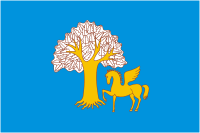 W
WAkbuzat is the most famous kubair of the Bashkirs. It shows similarity to other epics.
 W
WAlpamysh, also spelled as Alpamish or Alpamis, is an ancient Turkic epic or dastan, an ornate oral history, generally set in verse, and one of the most important examples of the Turkic oral literature of Central Asia, mainly the Kipchak Turks.
 W
WBayram is the Turkic word for a nationally-celebrated festival or holiday, applicable to both national and religious celebrations. In accordance with this dual applicability, the method with which one determines the yearly timing of Bayrams is different for national and religious holidays.
 W
WThe Book of Dede Korkut or Book of Korkut Ata is the most famous among the epic stories of the Oghuz Turks. The stories carry morals and values significant to the social lifestyle of the nomadic Turkic peoples and their pre-Islamic beliefs. The book's mythic narrative is part of the cultural heritage of the peoples of Oghuz Turkic origin, mainly of Turkey, Azerbaijan, and Turkmenistan.
 W
WBurkhanism or Ak Jang, is a new religious movement that flourished among the indigenous people of Russia's Gorno-Altai region (okrug) between 1904 and the 1930s. Czarist Russia was suspicious of the movement's potential to stir up native unrest and perhaps involve outside powers. The Soviet authorities ultimately suppressed it for fear of its potential to unify Siberian Turkic peoples under a common nationalism.
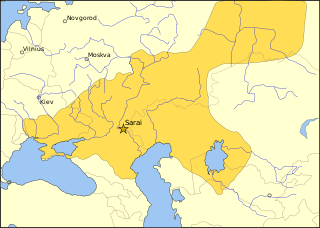 W
WEdigu (1352–1419) was a Turkic Muslim emir of the White Horde who founded a new political entity, which came to be known as the Nogai Horde.
 W
WThe Epic of Koroghlu is a heroic legend prominent in the oral traditions of the Turkic peoples, mainly the Oghuz Turks. The legend typically describes a hero who seeks to avenge a wrong. It was often put to music and played at sporting events as an inspiration to the competing athletes. Koroghlu is the main hero of epic with the same name in Azerbaijani, Turkmen and Turkish as well as some other Turkic languages. The epic tells about the life and heroic deeds of Koroghlu as a hero of the people who struggled against unjust rulers. The epic combines the occasional romance with Robin Hood-like chivalry.
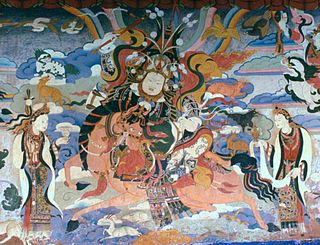 W
WThe Epic of King Gesar, also spelled Geser or Kesar, is an epic cycle, of Tibet and greater Central Asia, believed to date from the 12th century, that relates the heroic deeds of the culture hero Gesar, the fearless lord of the legendary kingdom of Ling. It is recorded variously in poetry and prose, through oral poetry performance, it is sung widely throughout Central Asia and North East of South Asia. Its classic version is to be found in central Tibet. Some 100 bards of this epic are still active today in the Gesar belt of China. Tibetan, Mongolian, Buryat, Balti, Ladakhi and Monguor singers maintain the oral tradition and the epic has attracted intense scholarly curiosity as one of the few oral epic traditions to survive as a performing art. Besides stories conserved by such Chinese minorities as the Bai, Naxi, the Pumi, Lisu, Yugur and Salar, versions of the epic are also recorded among the Balti of Baltistan, the Burusho people of Hunza and Gilgit and the Kalmyk and Ladakhi peoples, in Sikkim, Bhutan, Nepal, and among various Tibeto-Burmese, Turkic, and Tungus tribes. The first printed version was a Mongolian text published in Beijing in 1716.
 W
WGrey wolf is a sacred animal and national symbol in Turkic and Mongol mythology.
 W
WHıdırellez or Hıdrellez is celebrated as the day on which the Prophets Hızır (Al-Khidr) and Ilyas (Elijah) met on Earth. Hıdırellez starts on May 5 night and falls on May 6 in the Gregorian calendar and April 23 in the Julian calendar. It is celebrated in Turkey. It celebrates the arrival of spring. People pray on this day whatever their wishes are. They make symbols with stone or draw of their wishes.
 W
WKoroğlu is a semi-mystical hero and bard among the Turkic people who is thought to have lived in 16th century. The name of "Köroğlu" means "the son of the blind", "the son of ember" or "the son of the clay" in Turkic languages. His real name was Ruşen Ali in Turkish or Rövşən in Azerbaijani.
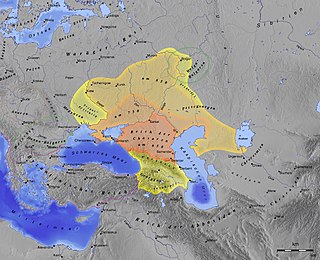 W
WKozar is a personal name with its origins in Turkic and/or Slavonic languages.
 W
WNardoqan or Nardugan was a Turkic holiday concept. Nowadays, it is most commonly used to refer to the winter solstice in many Central Asia languages. It is also used as an equivalent name for the Christian holiday Christmas.
 W
WSabantuy is a Tatar, Idel-Uralian, Bashkir and Kazakh ('Sabantoy') summer festival, that dates back to the Volga Bulgarian epoch. At first Sabantuy was a festival of farmers in rural areas, but it later became a national holiday and now is widely celebrated in the cities. In 2012, Kazan Sabantuy was celebrated on June 23.
 W
WWheat sprout is a product of germinating wheat seeds in a wet and relatively warm environment in a process called sprouting. It is commonly known and used in Iranian cuisine. However, it is sometimes used instead of barley in the form of malt for making beer.
 W
WTengrism is an ancient ethnic and state Turko-Mongolic religion originating in Central Asia and the Eurasian steppes, based on folk shamanism, monotheistic at the imperial level, and generally centered around the titular sky god Tengri. The term also describes several contemporary Turko-Mongolic native religious movements and teachings. All modern adherents of "political" Tengrism are monotheists.
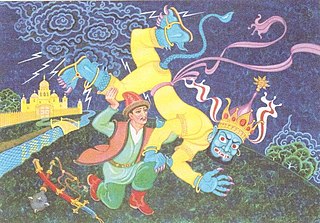 W
WUral-batyr or Ural-batır is the most famous kubair of the Bashkirs. It is a telling of heroic deeds and legendary creatures, the formation of natural phenomena, and so on.
 W
WVattisen Yaly is a contemporary revival of the ethnic religion of the Chuvash people, a Turkic ethnicity of Bulgar ancestry mostly settled in the republic of Chuvashia and surrounding federal subjects of Russia.
 W
WYeruslan Lazarevich, also known as Eruslan Lazarevich or, in the Tatar original, Uruslan, is the Russian folk literature hero of The Tale of Eruslane Lazarevic, recounting the many military and amorous adventures of a young and beautiful hero, a tale which was much liked by the old Russian readers due to a variety of its content and by appearing frequently on the lubok, was widely spread among the people. Its influence is noticeable even on some retelling of tales about Ilya of Murom.
 W
WYhyаkh is the New Year holiday in Sakha Republic.